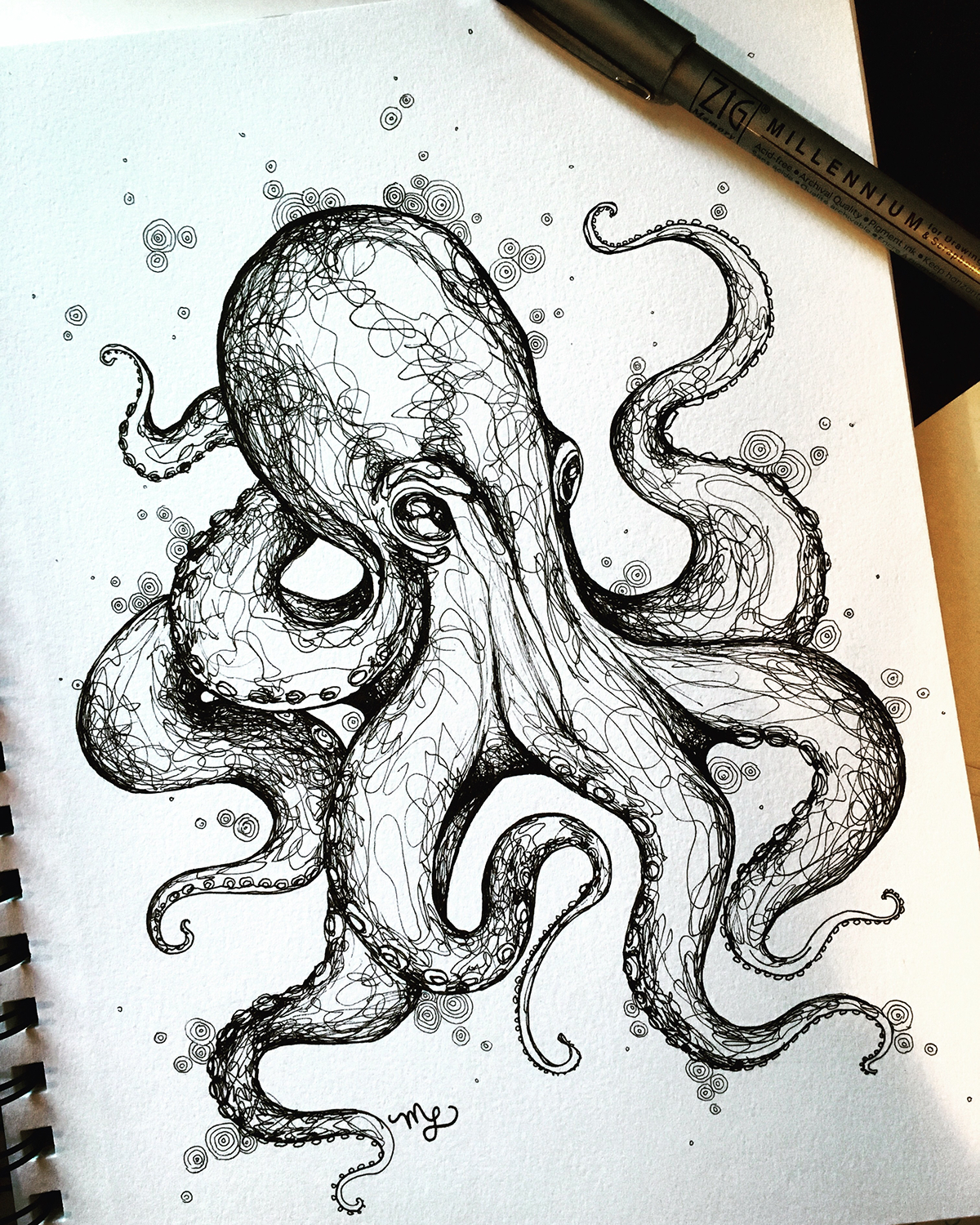
Introduction
Octopus drawing is a popular art form that captures the beauty and complexity of these fascinating creatures. Artists of all skill levels can enjoy creating their own octopus drawings, whether it's a realistic portrayal or a more whimsical interpretation. In this article, we will explore the techniques and tips for creating stunning octopus drawings.
Choosing the Right Materials

Before starting your octopus drawing, it's important to gather the right art supplies. A good quality set of colored pencils or graphite pencils, along with a sketchbook or drawing paper, will be essential. You may also want to consider using markers, pastels, or watercolors to add depth and vibrancy to your drawing.
Observing Octopus Anatomy
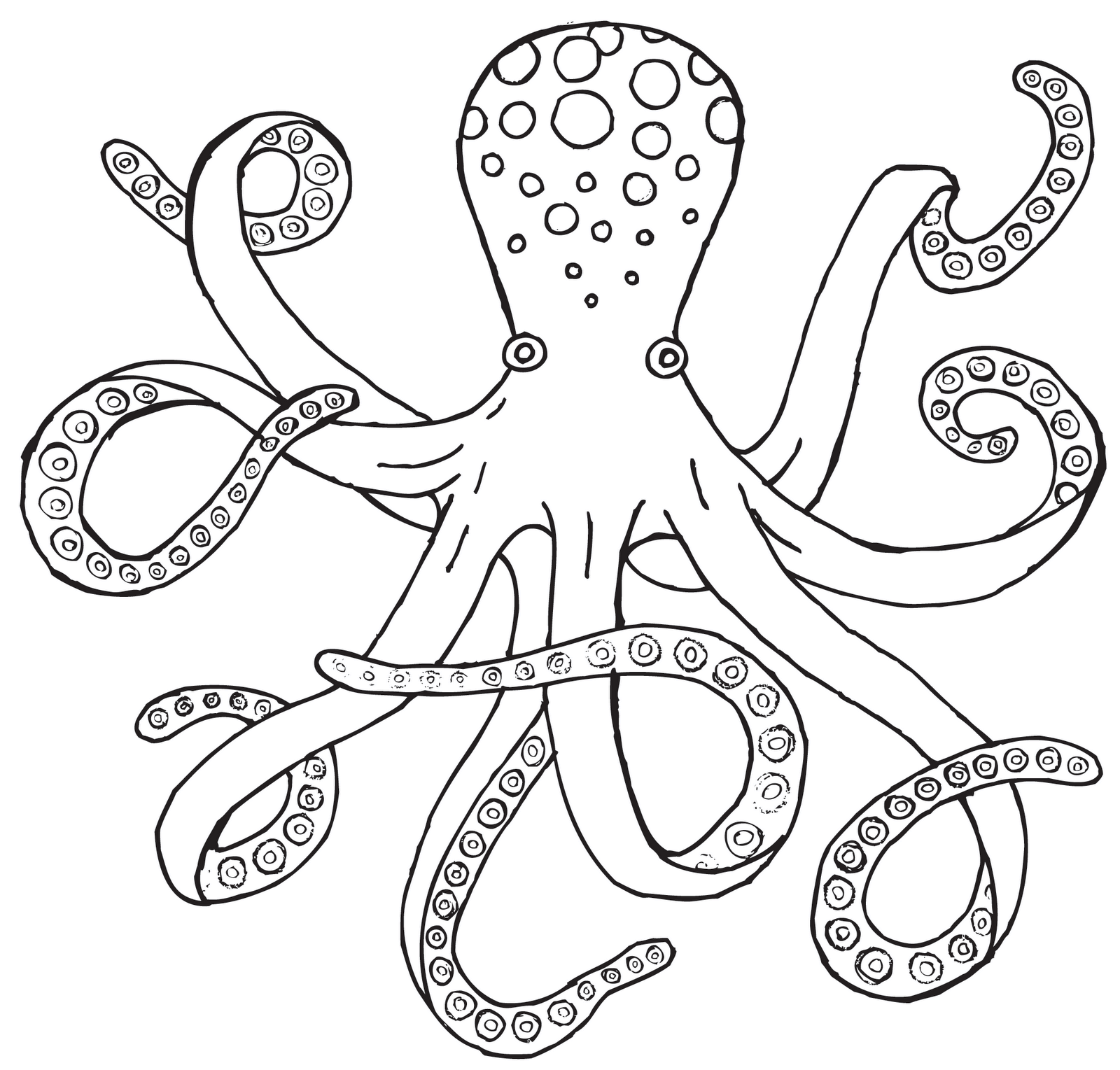
Understanding the anatomy of an octopus is crucial for creating realistic drawings. Take the time to study their body structure, including the placement of the eyes, tentacles, and suckers. Pay attention to the proportions and the way they move in water. This observation will help you accurately depict an octopus in your drawing.
Sketching the Basic Shape

Begin your octopus drawing by lightly sketching the basic shape of its body. Start with a simple oval or egg-like shape to represent the head. From there, add elongated shapes for the tentacles. Remember to keep your lines light and loose, as they can be easily adjusted and refined later on.
Adding Details
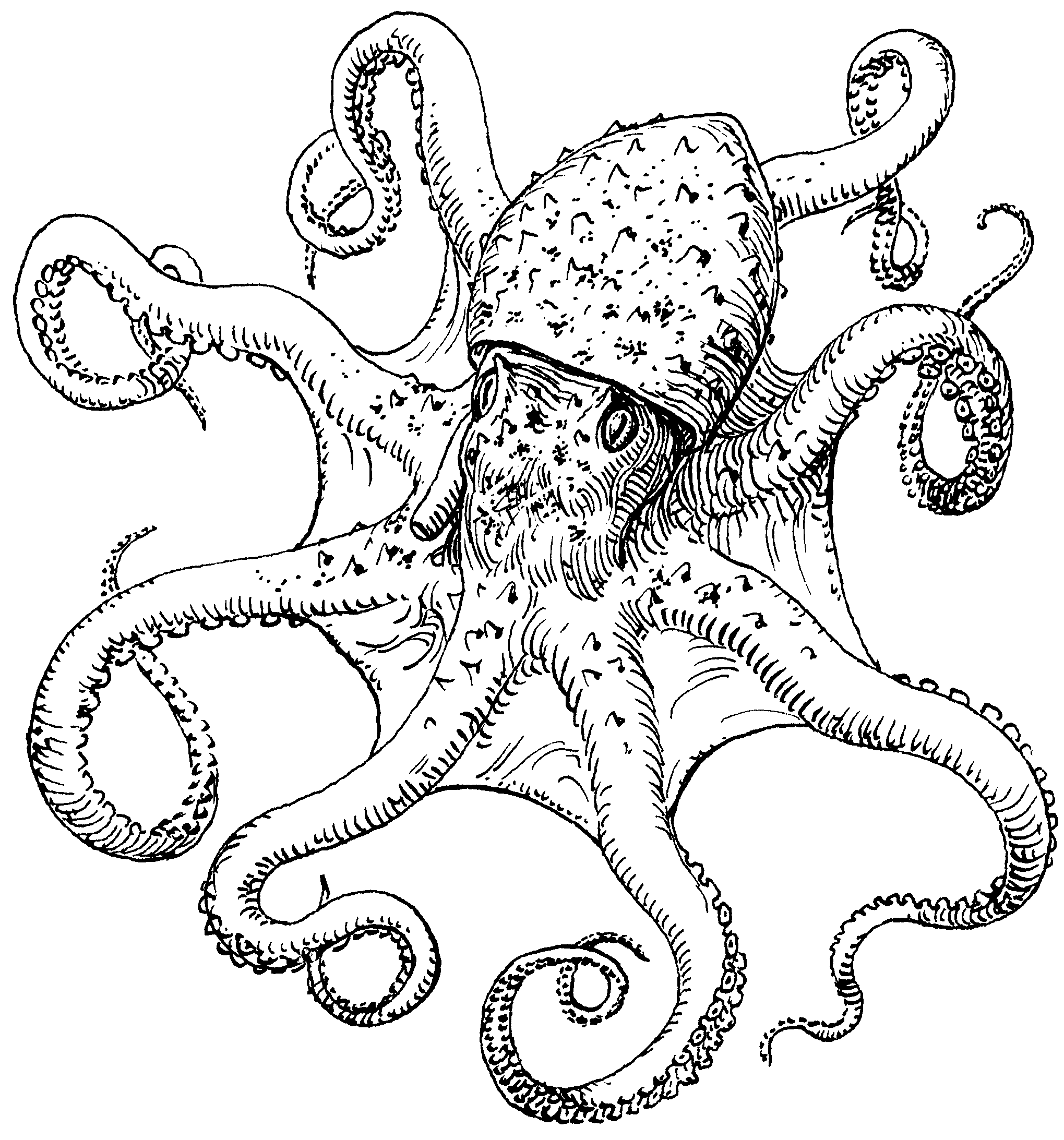
Once you have the basic shape in place, start adding the details to your octopus drawing. Focus on capturing the texture and patterns of its skin, as well as the unique features such as the suckers on the tentacles and the eyes. Take your time and work on one section at a time, gradually building up the complexity of your drawing.
Playing with Colors
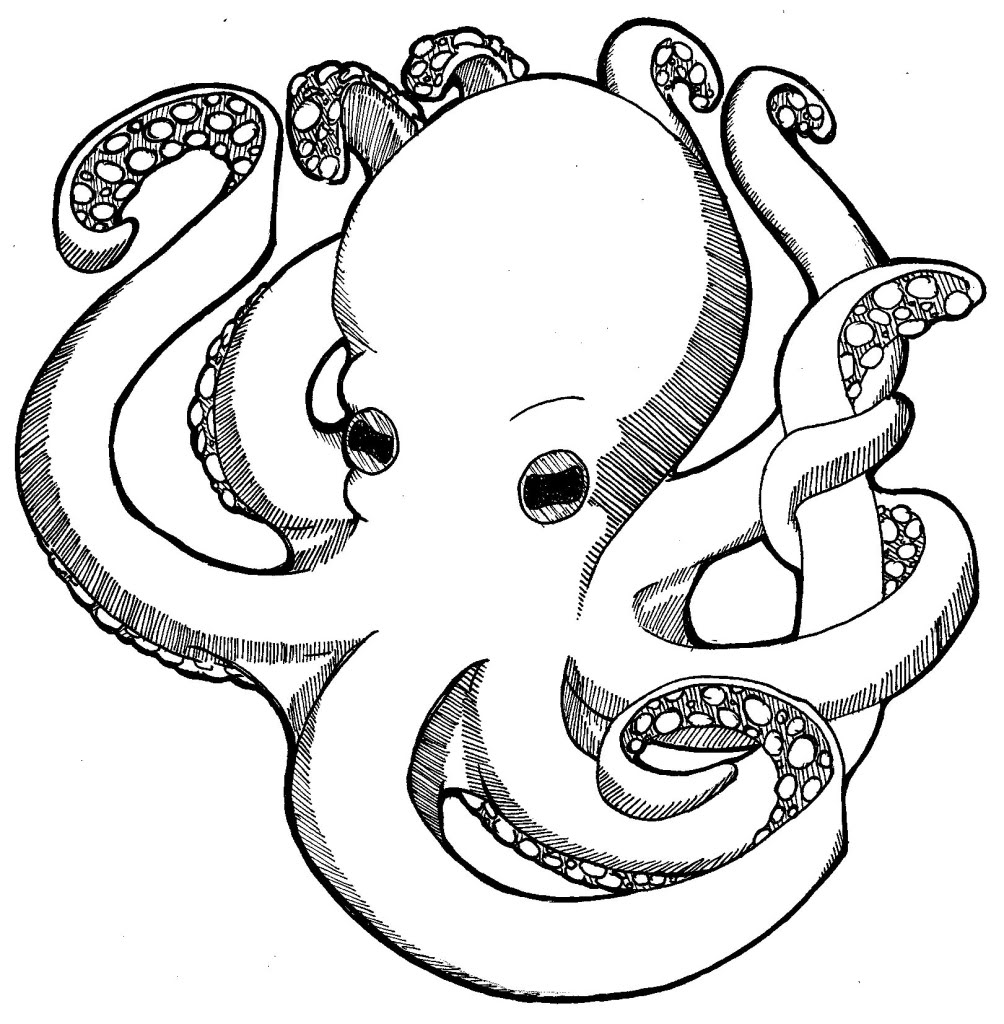
One of the most exciting aspects of octopus drawing is experimenting with colors. Octopuses come in a variety of hues, from vibrant oranges and blues to more subdued earthy tones. Consider using a combination of colored pencils, markers, or watercolors to bring your octopus drawing to life. Play with different color schemes and shading techniques to create depth and dimension.
Exploring Different Styles
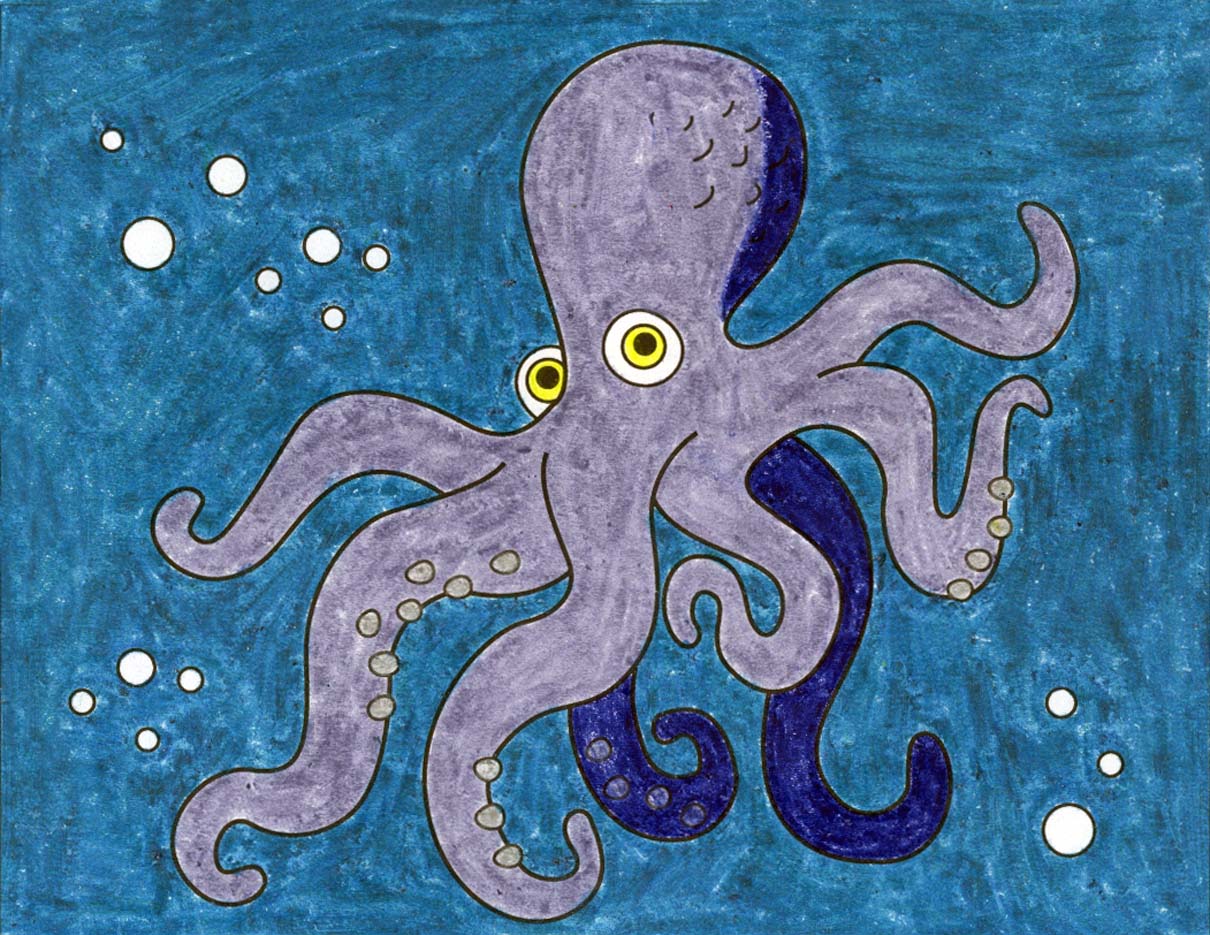
While realism is a popular approach for octopus drawing, don't be afraid to explore different styles. You can opt for a more abstract or cartoonish interpretation, allowing your creativity to shine. Experiment with different line weights, textures, or even mixed media techniques to add a unique twist to your octopus drawing.
Adding Background Elements

To enhance the overall composition of your octopus drawing, consider adding background elements. You can depict an underwater scene with coral reefs, sea plants, or other marine creatures. This will not only provide context but also create a visually appealing contrast to the main subject.
Refining and Finalizing

Once you are satisfied with the details, colors, and overall composition of your octopus drawing, it's time to refine and finalize it. Use an eraser to remove any unnecessary guidelines or stray marks. Darken the important lines and details to make them more prominent. Take a step back and assess your drawing to ensure it captures the essence of an octopus.
Sharing and Showcasing Your Artwork

After completing your octopus drawing, it's time to share and showcase your artwork. Consider scanning or photographing it to create a digital version that can be shared on social media platforms or your personal art portfolio. Participating in art communities or local exhibitions can also provide opportunities to gain feedback and connect with fellow artists.
Conclusion
Octopus drawing allows artists to explore the wonders of these magnificent creatures through art. Whether you choose to create a realistic depiction or a more imaginative interpretation, the key is to have fun and let your creativity flow. With the right materials, observation, and practice, you can create stunning octopus drawings that capture the beauty and intricacy of these fascinating sea creatures.